Jeff Rowland Corus preamplifier + PSU (Power Storage Unit)
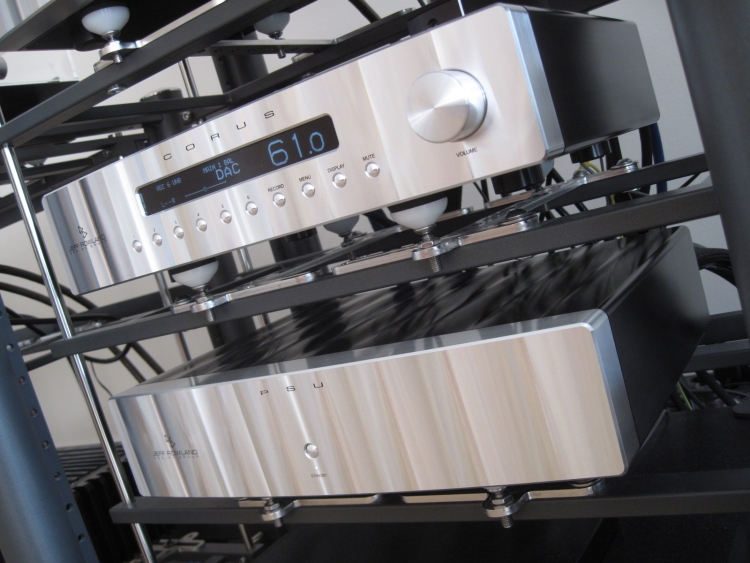
Corus + PSU = heavenly refined and breathtakingly brilliant sound!
Review samples kindly supplied by HVP Audio
This is already the third time that I am reviewing the Corus. First time was in 2013 when my system was quite different than it is now, leading to good results, but it wasn’t until the Corus was again reviewed in 2016 that it showed its true potential and left me wanting one. This third time around it comes as a super attractive package, complete with the brand new Power Storage Unit.
Don’t worry, I won’t make you wait until the end of the review to reveal my feelings about the Corus + PSU. Instead I will state right now that the PSU makes for a change that cannot be called subtle by any stretch of the imagination. The Corus on itself is already a reference preamp, but the PSU really makes for an unbelievable transformation!
Forget about creamy classic sound or clean modern sound, for the Corus/PSU are not about imposing any character on the sound. Instead, you always get glorious, fluid, refined, lively and fascinating sound no matter what you play. Let me state it very clearly: the Corus + PSU are easily the best preamp that JRDG have produced so far.
Well I guess that sums it up quite nicely, I could almost end the review right here! But let me provide some perspective. Do read on!
Jump back to the Corus review Part 1 (initial setup)
Jump back to the Corus review Part 2 (new setup)

Corus
This is primarily a review of the PSU and how it makes the Corus perform, but as can be read in the previous installments, the Corus in its basic form is also a mightily impressive preamp. Back in 2013 my system was tuned to the sound of classic JRDG components, and as I later learned was also off balance due to room issues. In this environment I had trouble bedding the super-neutral sounding Corus in initially, but when my system was sorted I the Corus was reviewed the second time around, it quickly had me hooked to its superbly transparent and neutral sound.
Even if the Corus on itself doesn’t bring any character to the table and can therefore sound a little overly clean compared to classic JRDG gear, it was difficult for me to go back to the arguably more romantic sounding Coherence II. There is just something highly addictive to the very spritely way that the Corus produces music. Especially its articulate and tuneful bass has to be heard to be believed: completely devoid of excess mass or bloom yet highly elastic and full when it needs to, it is entirely truthful to the source.
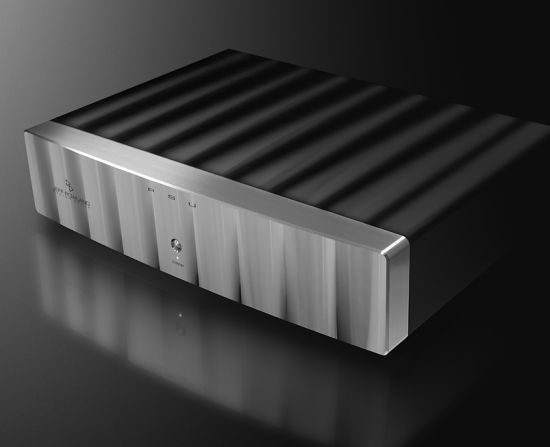
PSU
The Power Storage Unit is not a BPS: there are no batteries inside. Instead the PSU is filled to the brim with so called Super Capacitors that charge very quickly, can hold massive amounts of energy (233 farads which is 233,000,000 microfarad!) and release this slowly. In doing so the PSU offers the advantages of battery power (clean power), without the drawbacks (high internal resistance). Interestingly, the PSU can feed clean DC power to the Corus pre amplifier and Aeris DAC simultaneously, or the reference phono stage that is currently being worked on.

Wikipedia describes supercapacitors as follows:
Supercapacitors have the highest capacitance values per unit volume and have the greatest energy density of all capacitors. Supercapacitors are manufactured with capacitance values up to 12,000 F/1.2 V, having specific capacitance values up to 10,000 times that of electrolytic capacitors.
With this high capacitance values supercapacitors are bridging the gap between capacitors and batteries. In terms of specific energy as well as in terms of specific power this gap covers several orders of magnitude. However, this high capacitance will in comparison with batteries only be about 10% of the capacity of batteries. While existing supercapacitors have energy densities that are approximately 10% of a conventional battery, their power density is generally 10 to 100 times as great. Power density combines the energy density with the speed at which the energy can be delivered to the load.
Unlike batteries, in the faradaic redox reactions of the pseudocapacitance property of a supercapacitor, the ions simply cling to the atomic structure of an electrode, and no or negligibly small chemical modifications are involved. This energy storage with fast charge-transfer makes charging and discharging of supercapacitors much faster than batteries. Additionally, supercapacitors will tolerate large numbers of rapid charge and discharge cycles.
The PSU has its own on board power supply so the Corus’ external power supply can be laid aside. This means that savings can be made when buying the combo at once.
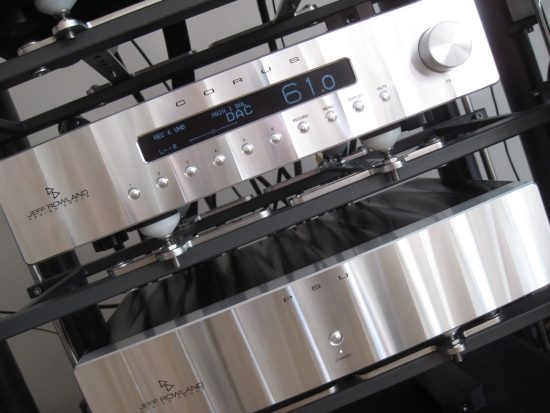
Criterion
Although not officially confirmed, to the best of my knowledge the pre-amp part of the Corus is largely identical to that of the Criterion. Apart from the major difference in power supply, the only other difference I can discover is the volume control that in case of the Criterion is a two-function unit that can be clicked as well as rotated, for entering menu items for example while in case of the Corus it is a purely rotary control (entering menu items by exiting the menu).
in the power supply section only. The funny thing is that the Criterion’s display section is actually the combo’s power supply while the blind paneled larger section is the actual preamp. Putting the Corus and Criterion side by side it becomes clear that the Criterion’s housing also has the same dimensions as the Corus, but without the display and operational elements. So, if the difference is only in the power supply, surely the difference can’t be large, right? You’d be surprised!
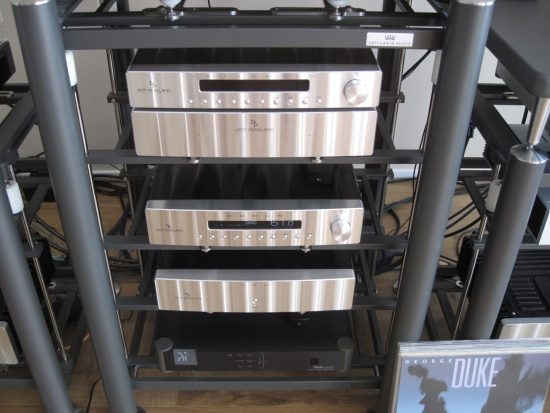
Tonally, the Criterion has a lot in common with the Corus: it is similarly clean, transparent and refined and is also more finely detailed, with better bass articulation than the more classic JRDG preamps such as the Synergy IIi and Coherence II. Being a battery-powered preamp however makes it sound a little closer to the aforementioned classic designs in terms of sonorous bass and midrange voluptuousness. Like with the Coherence II, the influence of the batteries can be heard also when the preamp is set to AC mode, when they are in circuit but charging while the preamp is fed from AC.
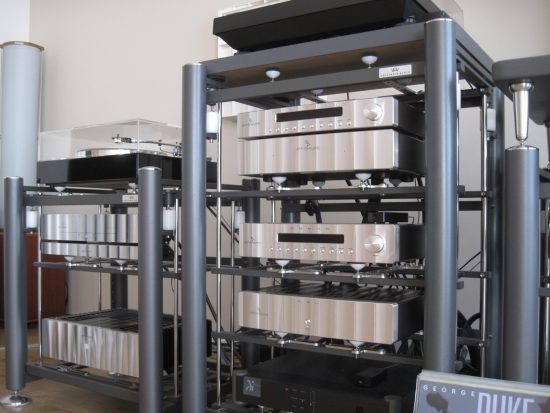
To me it sounds like the “battery sound” is simply switched between low and high modes by swithing from AC to battery only mode. The influence of the batteries can be seen as a blessing or a curse, it depends on the rest of the system and on user expectations. I won’t hide the fact that for the longest time I have found batteries to add romance and take away and overt cleanness that could spoil my musical pleasure when not in place. Especially when I still used the quite clean sounding Magnepan MG3.6R magnetostats. This is why I used BPS-6 power supplies with the model 6 power amps, and is also why I liked the Coherence II so much, in addition to it having a bigger and better power supply than the later Synergy models. But my need for batteries, and romantising the sound has been revealed to have been rooted elsewhere in my system and these days I feel that batteries are best avoided if you want the best transients and the most propulsive sound. This is just my long-winded way of indicating that the Criterion’s sound has aspects that place it somewhere between the classic Rowland sound and the modern Corus sound, and that this can be viewed as being either detractive from the clean and lively Corus sound, or the perfect antidote for an otherwise clean sounding system.

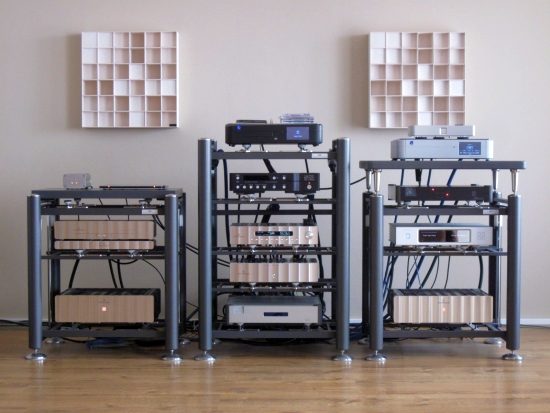
Above: during the Corus/PSU review, the PS Audio Directstream DAC and Memory Player were also visiting, and they paired excellently.
Between the Corus without PSU and the Criterion my vote would probably go to the Criterion because it offers a very large chunk of what makes the Corus so excellent, while adding body and substance to the upper bass and lower midrange, producing a more organically flowing and arguably emotionally more appealing sound which comes in handy when using speakers that are themselves also very clean sounding. But this is a relative matter that ties in with taste and system synergy.
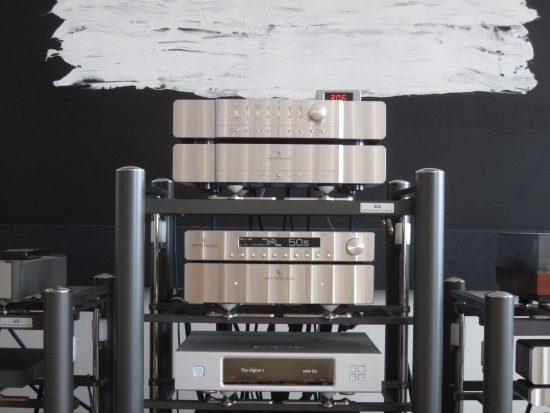
At the time that I am writing this review I have had the Criterion in my system for a few months and during that time I have grown very fond of it, but I must also admit to having missed the Corus’ cleaner sound and more articulate bass.
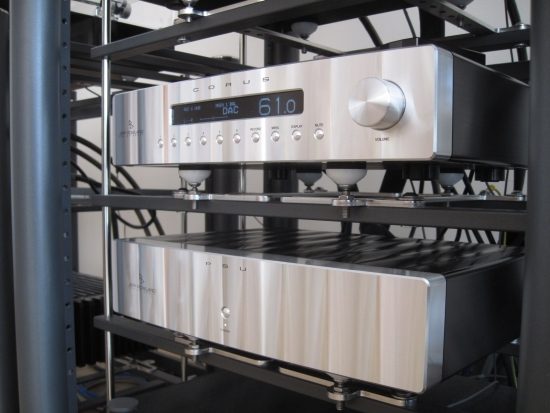
Corus + PSU
I was in the fortunate position to have at hand the Coherence II, Criterion and Corus, all at the same time. Surely this must count as a slice of Jeff Rowland heaven! The Coherence II is a true classic, and truth be told even in this elevated company it still sounds very good. Sure it cannot begin to match the recent preamps’ levels of transparency, detail and refinement and it is definitely not as articulate or as dynamic, but it has a rich smoothness and sonorous authority to it that is quite unique for a solid state preamp, and indeed has served me very well for over 10 years.
As described above, there is room for interpretation between Corus and Criterion, but when the PSU comes into play, it is quite quickly and very decidedly game, set and match. The PSU does not detract any of the aspects that make the Corus so great, but adds to them in a wholly coherent manner. The PSU makes the Corus sound every bit as energetic as it does when using an AC connection, but without any of the grain or hash that comes along with direct AC power, compared to the more silent, but more rounded and slower-sounding battery operation.
Most obvious is the deeper soundstaging that it provides, with better layering front to back while more clearly delineating the performers in that stage. There is an overwhelming sense of continuousness to the soundstage.
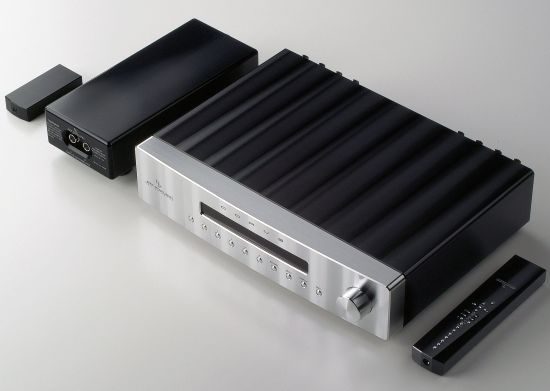
Corus with standard external power supply
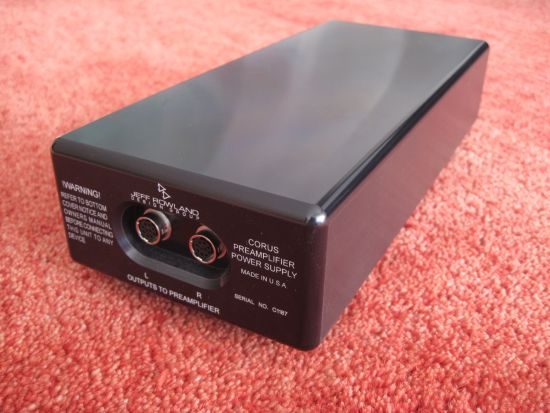
The PSU also removes the last trace of what I will refer to as “switching power supply noise”, for a lack of a better description. There is no doubt that switching power supplies can outperform traditional linear power supplies on many levels, especially in terms of agility and dynamic contrast, but very often they can also make a component sound “impatient” and somewhat gray, and this is one of the areas that a linear power supply, or batteries can address. In my experience thus far however always resulting in less articulate transient behaviour.
The PSU provides constant, utterly clean DC, but when required it delivers this extremely quickly. In more ways than one it sounds like a super-fast, low impedance, extra powerful battery. The result is a complete and utter continuity and coherence combined with a highly neutral and natural feeling of elasticity, much as is the case with live music.
The level of detail is also greatly enhanced, but without adding any edge or a forward nature to it, as often happens when the level of detail is perceived to be enhanced. This is an aspect of sound that is hard to describe but hink of it this way: just like a Retina display on the iPad doesn’t look artificially sharp but makes a non-retina iPad seem crude and low-res, the PSU raises the overall resolution of the sound, top to bottom, without creating a typical “hifi” sound. Put another way, I feel that the PSU further raises the Corus’ levels of detail, while simultaneously bettering the already superbly organic and naturally flowing nature of the battery-powered Criterion.
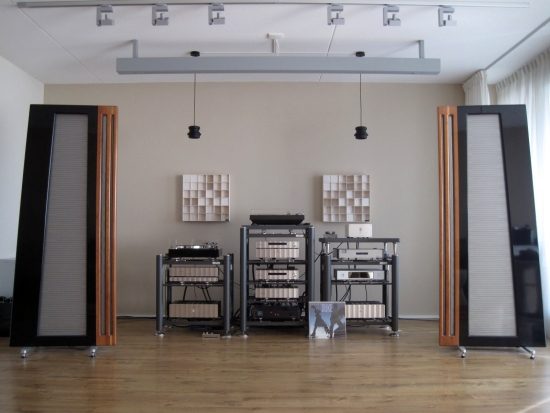
Conclusion
Sure, no matter how smoothly they operate or how nicely made the Corus and PSU are, 29.000 euro is a big pile of money, and I understand the “diminishing returns” sentiment, meaning that more and more money needs to be spent for ever smaller increases in performance.
There are two arguments to defend the cost of this super combo. First: the PSU can also power a second JRDG component. I sold my Aeris some time ago when I felt that some of its aspects were bettered by a much more affordable product, and now definitely do regret this, for I am told that the differences heard with the Corus are apparently even greater with the Aeris. I firmly suspect that the very aspects that made me want to sell the Aeris will actually be addressed by the PSU. This means that the PSU not only enables true reference level pre-amplification, but also quite possibly true reference quality DA conversion.
Second, if you want true reference quality, then you have to be prepared to open your wallet a little further. But just look around at what’s available at the very top, and it is easy to see that 29.000 euro is not even close to the eye-watering cost of some of its competitors.
Third, just view it as the nice car that you are not buying. Nobody views buying a new car as being in any way extravagant, and the Rowlands sure hold their value better than most cars.
But let’s move away from the cost factor and return to what it is all about: the sound. Going from my experience with a very large chunk of the Jeff Rowland preamp portfolio I think it is obvious that a power supply is the single most important part of a preamp, it can make or break the performance.Let me be very clear about this: the PSU makes for a change that cannot be called subtle by any stretch of the imagination.
The Corus with PSU truly comprise the ultimate JRDG pre-amplifier. Not only is this the best JRDG preamp I have heard but the combo puts in the best overall performance that I have heard in my system. It took only moments to make me decide to put my money where my mouth is and use a credit loan to purchase the combo.

Update 07-12-2020
Alas, the Corus is now discontinued.
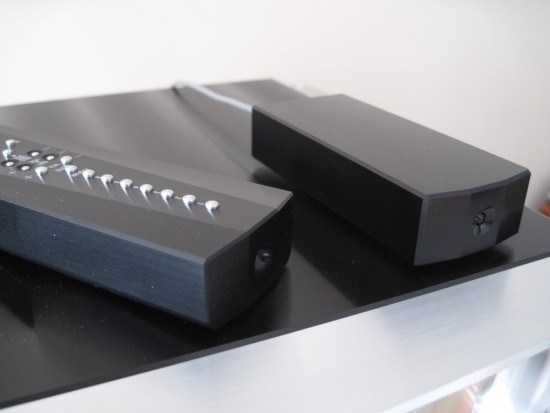
Impeccably machined remote control and receiver
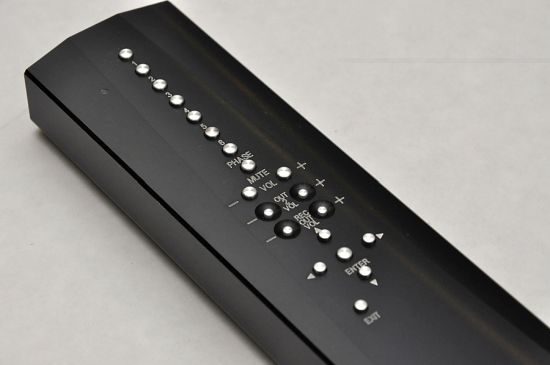
External Links
Manufacturer: Jeffrowlandgroup
Distributor for the Benelux:
HVP Audio
Prinses Irenelaan 218
2285GB Rijswijk
Nederland
Telephone: +31 61 492 69 47
Website : www.hvpaudio.com
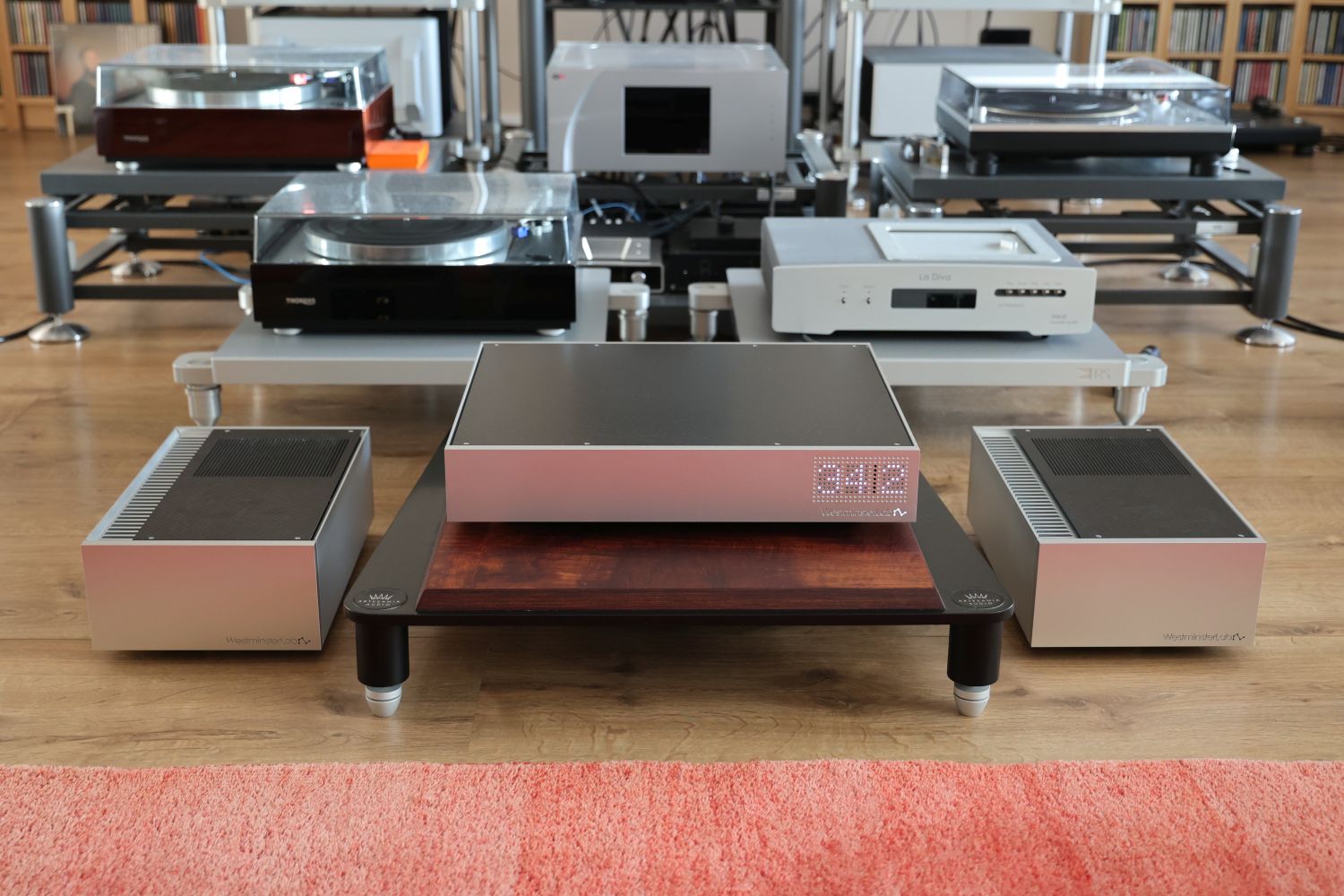
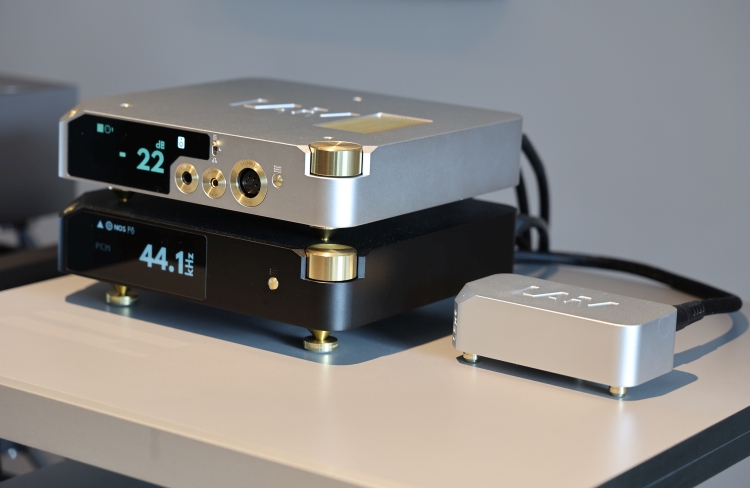
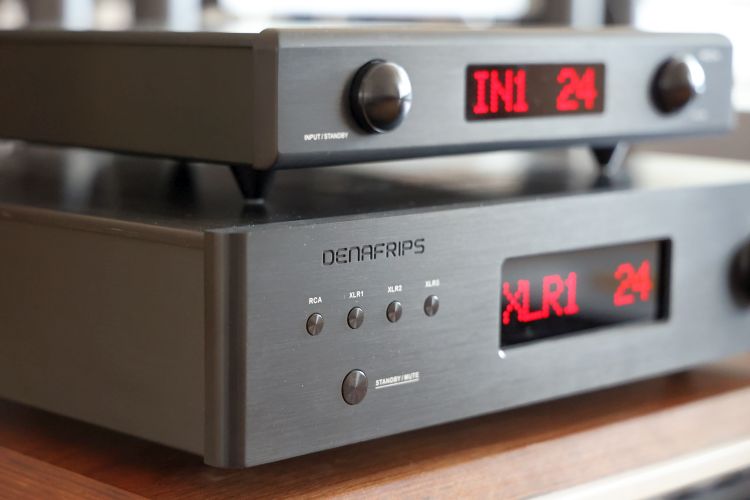
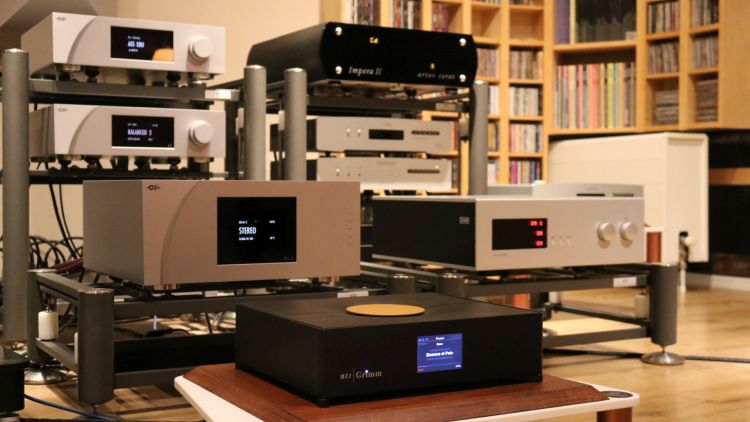
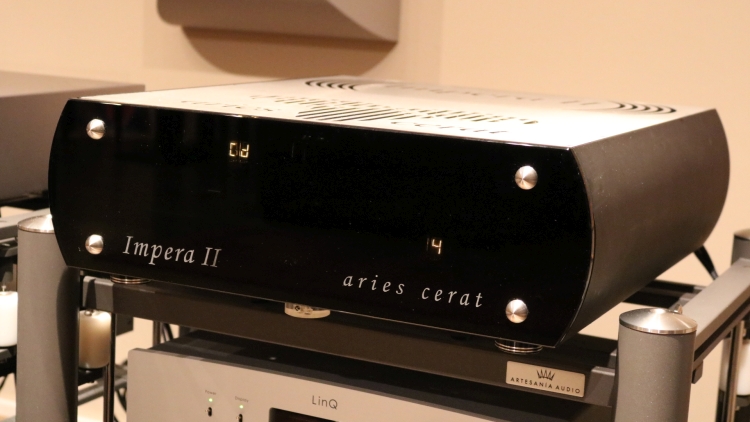
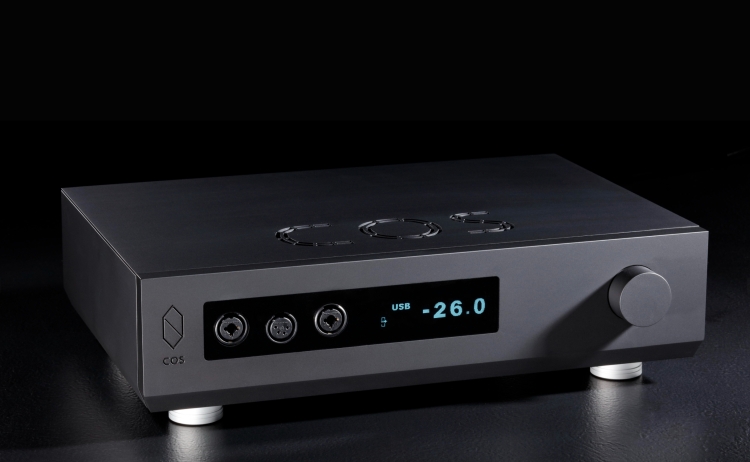
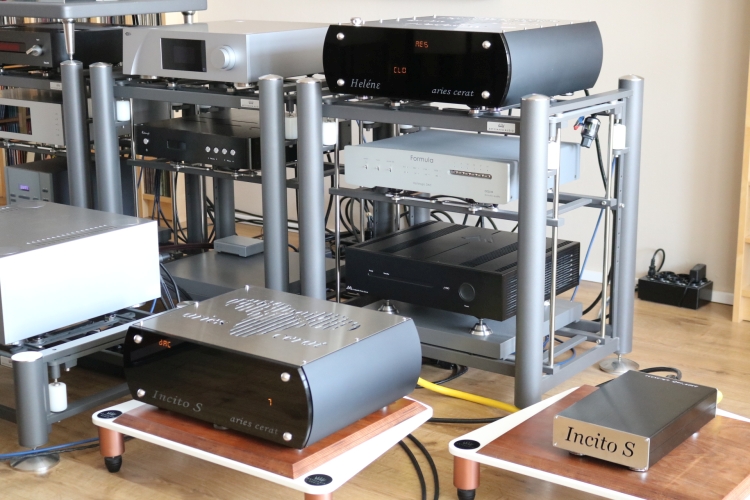
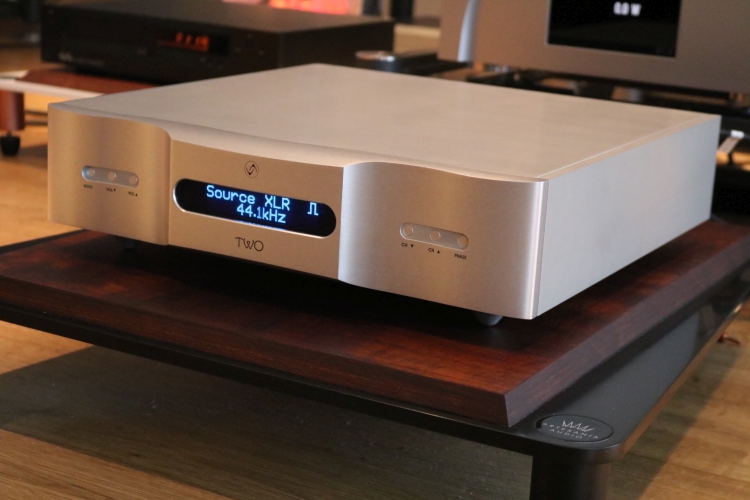
Hi Christiaan,
It is not clear to me if the review was done using Model 725 or Model 6 amp, as the photos shows Model 6 on your rack.
I am considering upgrading my Synergy to Corus + PSU and keep my 20 years old Model 6. Does it makes sense?
Thanks.
Thank you
Hi Dombert, I wish I had 725’s but I don’t. For this review I used model 6. While I did review the 725’s some time ago I have not been fortunate enough to be able to add them to my system. Replacing the Synergy with Corus + PSU will be a massive upgrade and I would definitely recommend this. Model 6 are still really great amplifiers with a lot of nuance and refinement that I don’t hear in most other amplifiers, which is why I still use them. However they are not the most powerful or solid sounding amps on the planet. 725s would be the ideal replacements if I had the funds. At this moment I have a 625s2 on review which performs a lot more impressively than the sixes in terms of power, bass grip and dynamics while retaining the model 6 strengths.
Coming back to your question on balance I think that the Corus + PSU is the most sensible upgrade as it provides the most impressive improvement. If you don’t really have a need for more power or a more solid sound (as I do) then you could just hang on to the sixes a while longer. They will reveal everything the Corus + PSU have to offer.
Hi Christiaan,
As you often compare favorably the Model 6 with newer amps, I was nearly certain there would be no compatibility issue between the 6 and the Corus pre. So I have been happy to hear firsthand that your very positive Corus + PSU review was done using the 6. Really thank you for your professional help.
In the meantime, an audio dealer told me that although the PSU was a new product, Corus was released in 2010 and would probably be replaced soon by a S2 version. Although I could not crosscheck the information, I feel somewhat troubled now,
Anyhow, I hope to be able to test soon a Corus at home with my 800 D3s and at that time I will test also a 625 S2 (future purchase, but will certainly not be able to afford the monos). I hope your upcoming review on this amp will be ready at that time, as your thorough analyses are always valuable.
Finally after I go with the Corus/PSU + 625S2 combo, I will certainly need to upgrade my old Cardas Golden Cross. If you or any of your readers has experience with Rowlands driving the new B&Ws, I will be happy to listen to cables suggestions.
Model 6 and Corus match splendidly for sure! It is very common for JRDG products to have long life cycles. Just because a product has been in production for 7 years is no reason for Jeff to issue something new. They only come with new products if a real improvement can be made and as far as I know no new preamp is in the making. Gardas GC is a really nice smooth sounding cable, but it is not really neutral, and quicker, more articulate cables can be found. Whether or not you should replace it however really depends on what you expect. I have precious little experience with the new post-UK range of B&W speakers, but the old range always needed plenty of control from amps, and I found that 802s and 800’s could use much more power than the sixes could provide. In that regard the more powerful (and tighter sounding) 625 or 725’s would seem tempting for sure.
Thank you Christiaan for your detailed answers. I learned a lot.
Hi again Christiaan,
What cable do you use in connecting the PSU with the AC mains? Is the PSU sensitive to power cables? I am currently using the stock cable.
Thanks and regards,
Joey
I’ve changed from Rowland to CH Precision some time ago but when I still used the PSU and Corus, I always preferred Belden 19364 cable. Even with the PSU, you can indeed hear differences between the various power cable options. The Belden is very neutral but can be fine-tuned using different Schuko and IEC connectors. I believe I used an FI-11 Gold Furutech IEC which is slightly smooth. Schuko I cannot remember but may well have been a Bals. With my current taste I would probably opt for Oyaide 004’s as they are more neutral as well as more articulate. A cost-effective solution (not equal in quality but very good nevertheless) is to use a fairly ordinary schuko such as Bals and a 004 IEC.
Hi Christiaan,
Thanks for your previous advice again. Just want to ask if it’s safe to switch off the PSU from AC mains on/off switch without touching the standby button on PSU itself? (That is next time, when I switch it back on, I just turn on the AC main connected to the PSU.)
Thanks and regards,
Joey
Safe: yes, but advisable: no. The unit is designed to always be switched on. It does not consume a lot of power at all. If you switch it off, the capacitors will deplete themselves pretty quickly and when re-starting, the PSU will need 10 or so minutes to come on power again.
What about the combi Corus/PSU and the 825?
I have only heard that combination at shows and a dealer’s home, not in a controlled environment so cannot say much about it. What I can say is that the combo sounds very transparent and agile. Up until a few years ago, I was still in favor of the smoother and gentler classic Rowland sound (Synergy/Coherence/model 6, etc) but I’m verging more and more toward a cleaner, more neutral, sound. I may never fall in love with class D as long as it sounds like the model 201, 125, or 525 but the 825 may well be an exception. I’d need to hear it in my system to say anything more about it, though.
Hello Christiaan, I am using a Rowland Aeris and Rowland 725 amps and would like to add some more organic flow and soundstage depth to my system then with current (non Rowland) preamp. Would u recommend the Corus or the Criterion? Budgetwise these would come into reach secondhand. Adding a psu to the Corus would be financially difficult atm, but I dont want to regret it afterwards..if I go with a Criterion now, the Aeris will remain without PSU, or when I buy one it will then only be an upgrade for the Aeris, and not usuable on the Criterion. Since you described the 725s as faster and more dynamic but less romantic then the sixes, I was wondering which pre you would recommend in my case. I was considering a tube pre as well, but I worry about system synergy and gain issues there… did you test the 725s with non Rowland preamps as well? Thanks!
In terms of accuracy, linearity and transparency, the Corus + Aeris + PSU is the best you can get from JRDG. However, I understand your desire for soundstage depth and organic flow. With that in mind (and assuming you prefer the classic JRDG creaminess to the more modern, still fluid, but more neutral sound) it might be best to opt for the Criterion. The PSU sure improves both the Corus and the Aeris but it does not add the classic BPS sound which I think is what you are after.
The main thing that distinguishes Criterion from Corus is the BPS that works in the classic way and smoothens the sound when engaged whereas the PSU retains all the preamp’s speed, transient sharpness and dynamics while adding further refinement. When comparing a basic Corus (without PSU) to a Criterion in AC mode (BPS mode not engaged), the latter is more romantic and a little sweeter. The Corus on its own is really quite neutral, to the point of being relatively dry, if you compare it to the Synergy or Coherence. The Criterion, by contrast, remains ever so slightly creamy even though it has higher precision and more transparency than its forebears. In summary, the Corus is even more precise and articulate but the Criterion is creamier and indeed more organic, without being too far off in terms of transparency.
Just make sure to use fresh batteries, keep a spare set and change them every now and then (maybe twice a year) just to check if they’re still 100%. From my Coherence days, I recall that the preamp had slowly gotten lazier until a point where I felt a lot of slam was missing. But because the process goes so slowly you don’t notice the decay. And this is the case even with the preamp in AC mode. That was more than 5 years after placing the batteries. I’m not sure if the Criterion behaves the same way but it’s worth keeping in mind.
In terms of soundstage depth, I can’t really recall the precise differences. You could indeed add a tube preamp and that will work just fine with the 725’s but I’m afraid that opens up too much possibilities to go into here. What I can add is that I used all my Rowland power amps with various preamps and DACs from other brands and that has never caused any issues.
Wow Christiaan, thanks a lot for taking time to write such a long and clear, useful reply! I have been a fan of your reviews for the same reason, the comparisons to other gear and also the addressing of lesser points of reviewed gear, is something that most other reviewers do not do. This is in my opinion essential information for potential buyers of that gear, so keep up the good work I would say!
Hi Christiaan,
Thanks a million for the great website and enormous amount of valuable information you have presented over the years. Right now however I am a bit at a loss. I have this great ARC Ref 6 —> ARC 75se —> Tad Evolution One line up, but feel the sound is a bit too ballsy if I may say; I find myself turning the volume down just a bit too often and sometimes I feel the treble is just a bit edgy as well.
I would definitely like more creaminess and lushness in my sound. Your reviews of the older JR gear sound really tempting. However, I am a bit afraid to end up with a thinner sound than I currently have and loosing a bit of the really nice timbre that I have now.
Would you advise to replace the amp only and go Model 6 or (perhaps) 625 s2? Or replace all at once and add a Synergy 2i (but then with BPS1/2) or Coherence II as well? I feel the Criterion may be too similar to what I have and Corus+PSU is a bit too pricy right now.
Thanks again, I hope this is not overly detailed. Any guidance is much much appreciated.
Regards,
Pieter
Hi Pieter, the Ref6 is a full and sweet-sounding preamp. I think that the Ref75SE might be mainly responsible for the edginess you mention. However, please note that while this amp is not really stereotypical tube-like and it’s on the lean and bright side of neutral, I do not feel that it is actually edgy. I fear that the TADs’ open and airy treble may also have something to do with this. Although, I heard a pair of Evo 1’s only two weeks ago and have to say that they sounded warm in the midrange and open and airy in the treble but not hard or edgy.
Model 6’s are the fastest and most articulate JRDG amplifiers that I have heard. Of all their classics, they are the least voluptuous. Also, since you mention timbre, while the Ref75SE sure isn’t voluptuous itself, I’m afraid that you will indeed take a big step back in terms of naturalness. The Rowlands are highly fluid (especially for a transistor amp) but they sound relatively a little synthetic compared to a Ref75SE. Please have a search on this site as there is an article (I think it’s in the HFA audio history section) detailing the Ref75SE versus the sixes. I don’t think there’s anything to gain with this switch unless the TADs require more power or higher damping than the Ref75SE can provide. But even then, I’d suggest looking at a more recent amplifier because by now the sixes are getting quite old and sooner or later a recapping will be required. BTW, it’s indeed the Evolution Ones you have and not the Micro Evo One?
Likewise, if it’s fullness and lack of hardness that you’re after, changing the Ref6 for with any Jeff Rowland preamp may slightly increase transparency and resolution (Corus/Criterion) but it won’t improve on the ARC preamp’s strengths. The Coherence II really is very musical but it lags behind the later Rowland preamps in terms of resolution and transient cleanness.
I’d suggest sticking with the preamp and trying a different power amp. You could try a Bricasti (powerful but fluid, sweet and unforced), or, if you’d like to try a Rowland, a model 112. A model 10 is even nicer but its switching power supply is unreliable. The 112 is the same but with a linear power supply. It has a mellow sound with an exemplarily sweet and liquid treble that I think may be a good antidote.
Hi Christiaan,
Thank you for the detailed reply. That does indeed help me quite a bit further. Funny that only yesterday I quite a consequential step towards audio goodness by replacing my audioquest wild blue yonders with Transparent Reference interconnects. That helped quite a bit: a calmer, more flowing sound in stead of the leaner, more analytical charachter of the Audioquest. Also, I am planning to replace my Aurender N100H with the N10, which I believe to have a bit better timbre as well. And then may be (but only after having made some savings) I might indeed have a look at the huge but apparently sweet Bricasti.
Insights like the ones you are giving are invaluable. Hopefully we can soon resume visits to audio shows and as we share the Netherlands as a base, I hope to run into you there and say a quick thank you.
Regards,
Pieter
Hi Pieter, ah, yes, Transparent helped me out often in the past. There’s nothing quite like it. I hope so, too. You bet I will be at the next Veldhoven show (Dutch Audio Event) or High-End Munich!